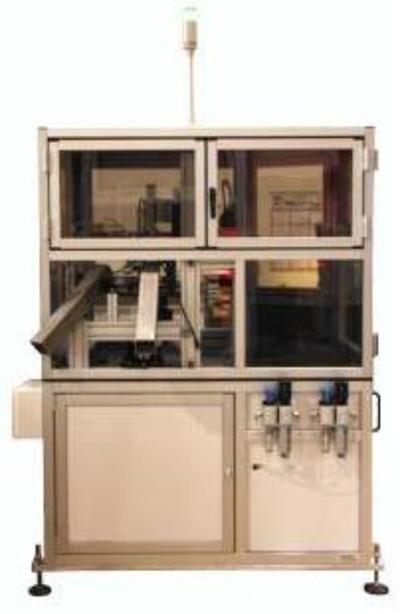
General Inspection LLC recently redesigned and improved the Gi-100; the new Gi-100DT features a dial table style glass top, which allows the parts to be stable. The stability of the parts allows for better image analysis, data capturing and precision. The Gi-100DT is primarily used for sorting flat parts that have more than a 2:1 length-to-diameter ratio — nuts, valve spring retainers, rivets, bushings, washers, etc., all at up to 1,000 parts per minute (though most parts average closer to 400 parts per minute).
Multiple sensors can be added to the Gi-100DT, including Eddy Current, Multiple Vision Stations with Gi specialty lenses and Laser Topography. Eddy Current ensures you check for metallurgical defects such as cracks, missing plating or hardness variations. Vision stations can be added to detect defects like chips in the ID, missing internal threads and even damaged threads on deep threaded holes, nylon ring presence, chips in grooves, cracks, missing or damaged weld projections and missing crimp. Our newest sensor, Laser Topography shows a 3D profile of the parts and can measure diameters, heights, as well as find defects like chips, dents and flatness.
The Gi-100DT is used to inspect 100 percent of the production. This instrument of lean, the sorting machine, has great flexibility to sort a wide variety of parts. The Gi-100DT with its array of Patented and Patent Pending sensors allows customers to achieve zero defects and realize: improvement of the manufacturing process, reduction in variation, and improved profitability.
Contact Details
Related Glossary Terms
- flat ( screw flat)
flat ( screw flat)
Flat surface machined into the shank of a cutting tool for enhanced holding of the tool.
- hardness
hardness
Hardness is a measure of the resistance of a material to surface indentation or abrasion. There is no absolute scale for hardness. In order to express hardness quantitatively, each type of test has its own scale, which defines hardness. Indentation hardness obtained through static methods is measured by Brinell, Rockwell, Vickers and Knoop tests. Hardness without indentation is measured by a dynamic method, known as the Scleroscope test.
- inner diameter ( ID)
inner diameter ( ID)
Dimension that defines the inside diameter of a cavity or hole. See OD, outer diameter.
